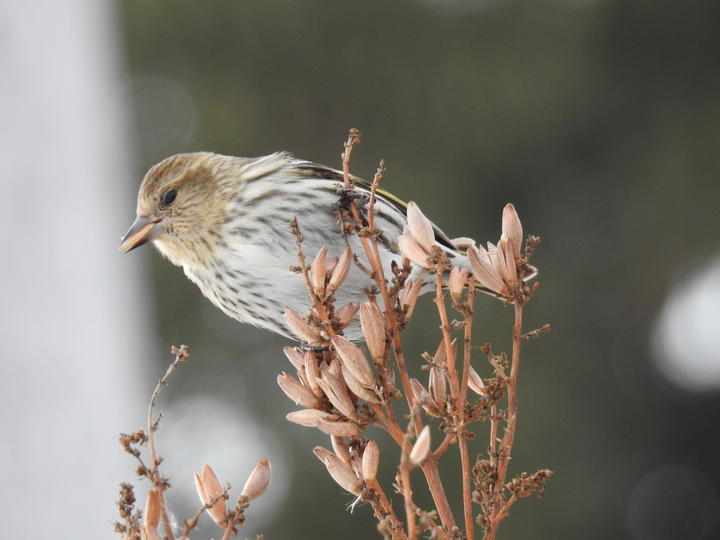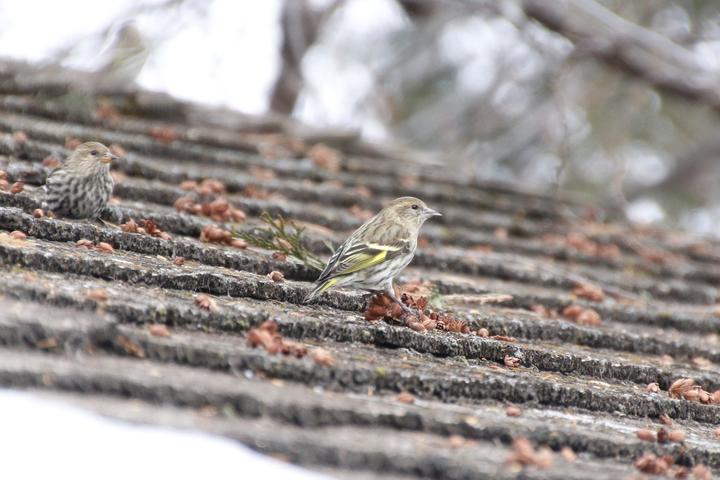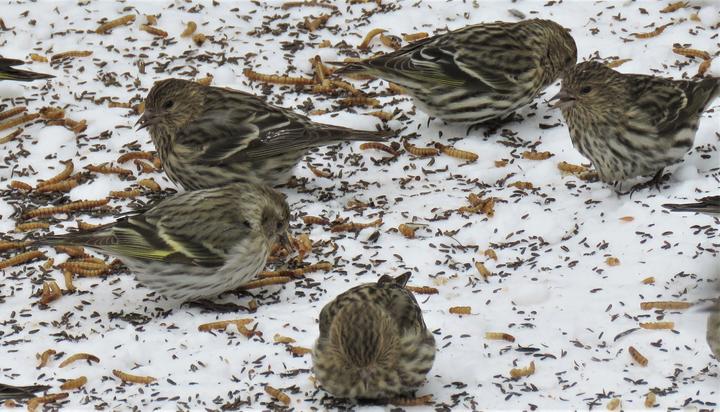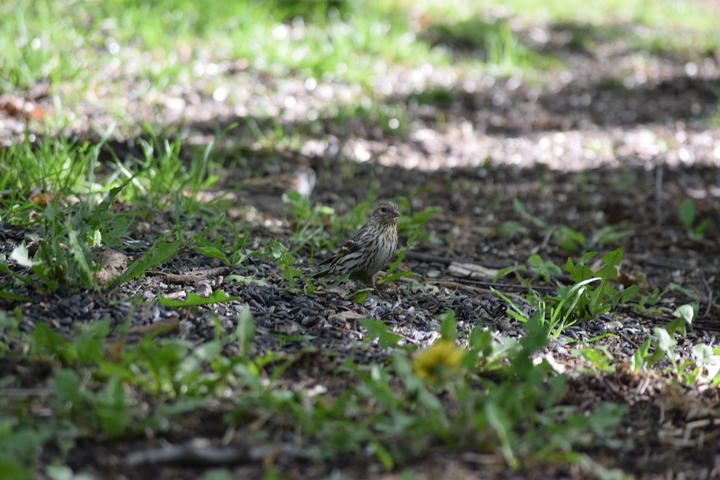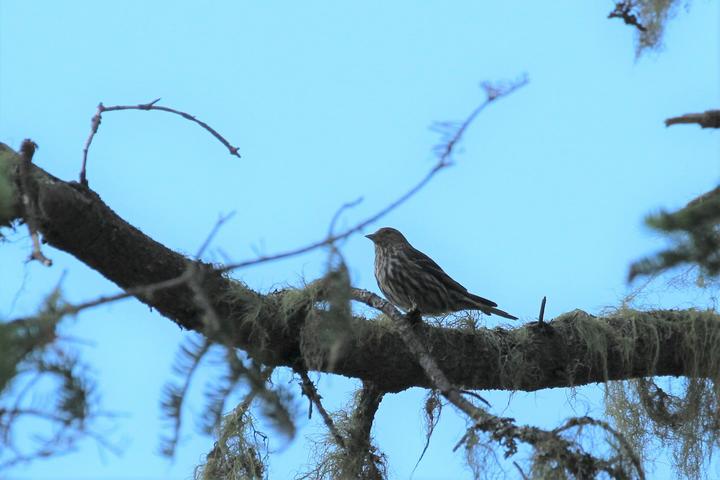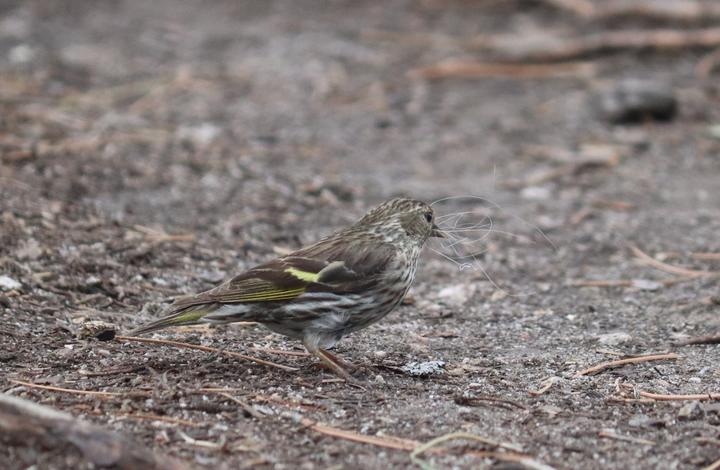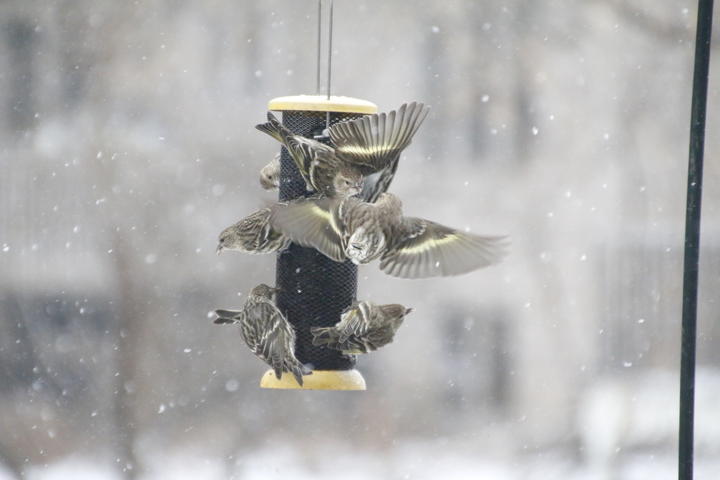More names for this bird
The Dakota and Anishinaabe were among the earliest people to name Minnesota’s plants and animals, as well as to understand them in relation to Minnesota’s climate and seasons. Those original names are still in use, and several are included on the Season Watch website. However, complete translations were not available.
Latin (or scientific name): Carduelis pinus
The scientific community has a convention of assigning agreed-upon Latin names to every kind of organism. Using scientific names helps people communicate confidently about the same organism and organize lifeforms based on how closely related they are.
Page contents
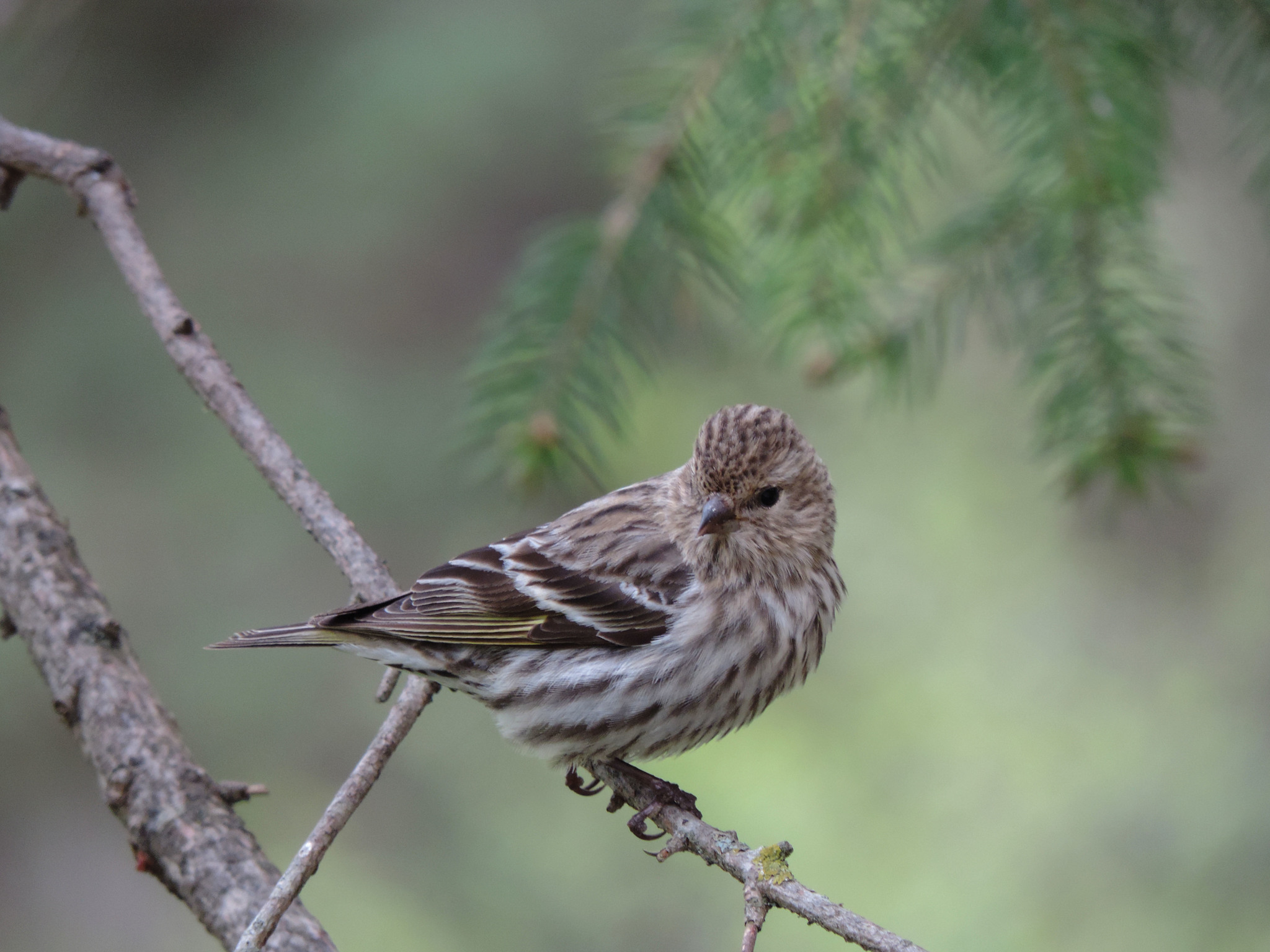
May 9, 2015, Beltrami County, Minnesota
Photo © Linda McColley, some rights reserved (CC-BY)
iNaturalist observation
About the pine siskin
- The pine siskin is a small finch with a short, notched tail and a slender, sharp pointed bill.
- They are streaked with brown and have yellow highlights on their wing and tail edges.
- Pine siskins tend to nest in open coniferous or mixed forests, but can also be found in suburban woodlands and parks.
- Pine siskins migrate. Expand the "Migration animation" section below to learn more. Every couple of years, pine siskins make unpredictable movements called irruptions into eastern and southern North America. These movements may not be entirely random. Data from banding suggest that some birds fly west-east across the continent, while others move north-south. Learn more about pine siskin movements at Project FeederWatch.
Migration animation
Migration animation
Click the full-frame icon (lower right corner of video) to play at full size.
More about eBird's abundance animations
eBird data from 2006-2020. Estimated for 2020. Fink, D., T. Auer, A. Johnston, M. Strimas-Mackey, O. Robinson, S. Ligocki, W. Hochachka, L. Jaromczyk, C. Wood, I. Davies, M. Iliff, L. Seitz. 2021. eBird Status and Trends, Data Version: 2020; Released: 2021. Cornell Lab of Ornithology, Ithaca, New York. https://doi.org/10.2173/ebirdst.2020
Visual guide to phenology
Watch for pine siskins' presence (or absence), abundance, and behaviors at different times of year.
Note to observers
This page explains general clues to watch for when observing pine siskin phenology. However, this page does not instruct observers on how to identify this bird or collect data in a standardized way.
- For help with identification, see The Cornell Lab's All About Birds.
- For guidance on collecting data, see Nature’s Notebook.
Audio resources
Visit All About Birds for recordings of songs and calls by pine siskins.
Keep exploring Season Watch
Keep exploring Season Watch
Co-author: Jayme Hogan, Minnesota Master Naturalist
